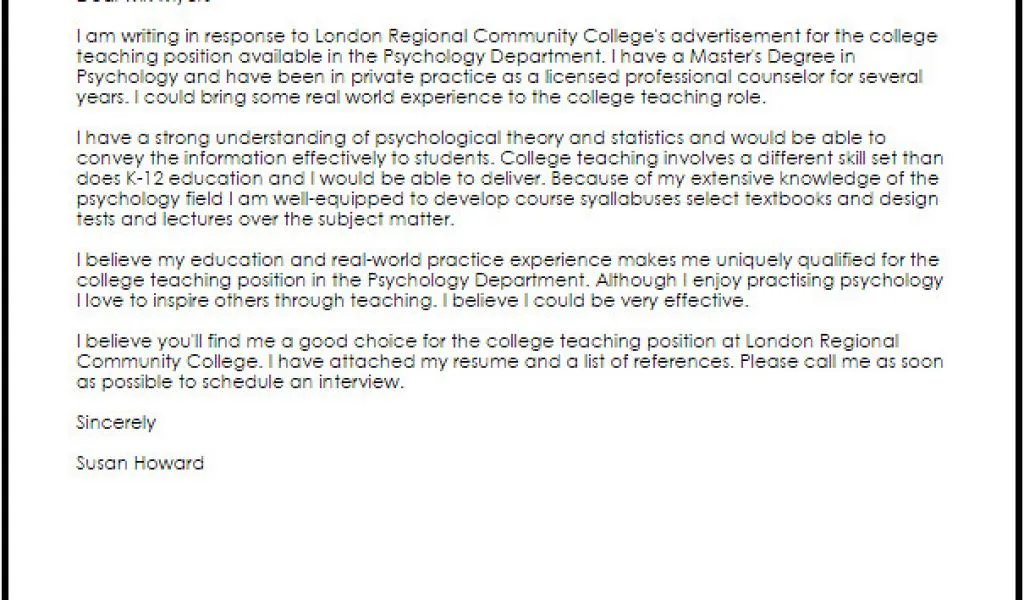What is a Teaching Cover Letter
A teaching cover letter is a crucial document that accompanies your resume when applying for a teaching position. It serves as your introduction to the hiring committee, providing a snapshot of your qualifications, experience, and passion for education. Unlike a resume, which presents a factual overview of your background, a cover letter allows you to articulate your personality, teaching philosophy, and what makes you the ideal candidate. It’s your chance to make a strong first impression and convince the employer to read your resume and consider you for an interview. The best cover letters are tailored to the specific position and school, demonstrating your genuine interest and understanding of their needs. A well-crafted cover letter can significantly increase your chances of getting noticed and landing your dream teaching job.
Why is a Cover Letter Important
In the competitive field of education, a cover letter is more than just a formality; it’s an essential tool. It’s your opportunity to differentiate yourself from other applicants and highlight your unique strengths and experiences that align with the specific requirements of the role. A compelling cover letter demonstrates your communication skills, writing abilities, and attention to detail. It also allows you to expand on your resume, providing context and depth to your qualifications. It’s where you can showcase your personality, enthusiasm for teaching, and your understanding of the school’s mission and values. Without a cover letter, your application might appear incomplete or lack the personal touch that can set you apart. By using a well-written cover letter, you can make a compelling case for why you are the right fit for the position and increase your chances of getting an interview.
Highlighting Your Qualifications
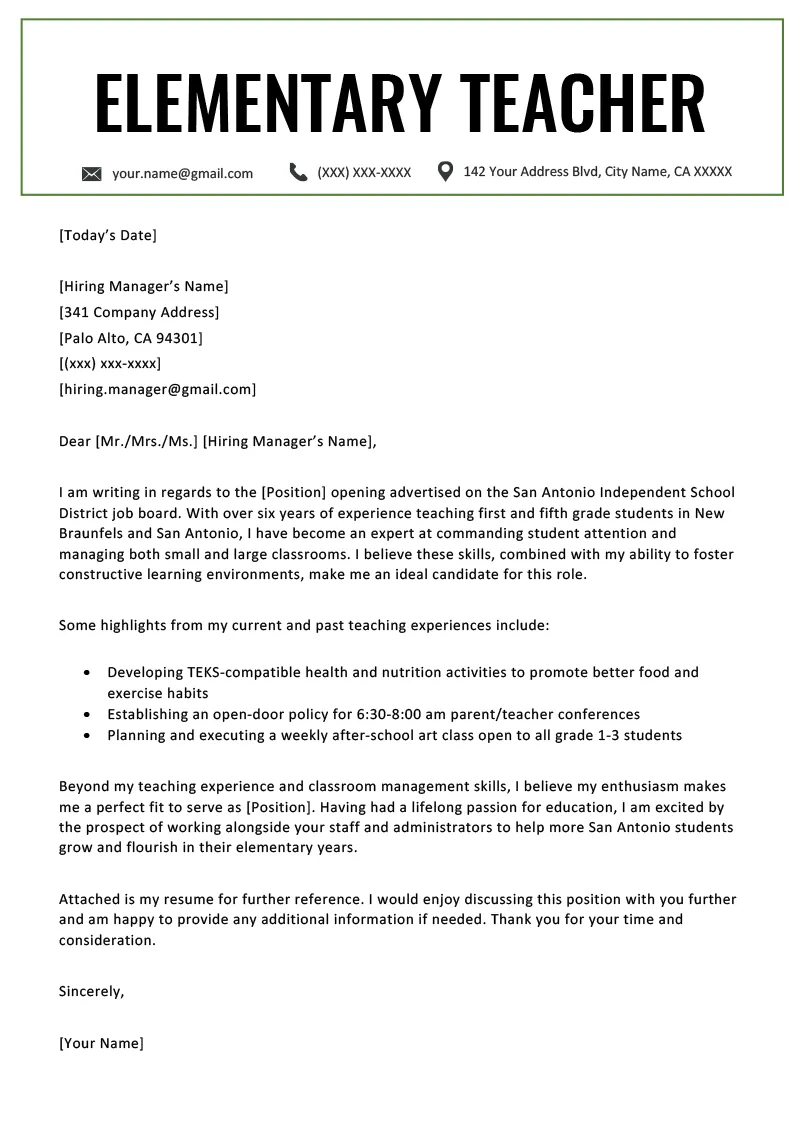
Your teaching cover letter is the perfect platform to showcase your qualifications and how they align with the job requirements. This is where you demonstrate your value to the school and why you should be considered for the position. It’s important to clearly and concisely present your skills, experience, and achievements, focusing on what you bring to the table. By highlighting relevant experiences, you can paint a picture of your capabilities and make the hiring committee see you as a good fit.
Education and Credentials
Start by mentioning your educational background, including your degree(s), major(s), and any relevant certifications or licenses. Always include the name of the institution, dates of attendance, and any honors or awards you received. If you have advanced degrees or specialized training, be sure to highlight them, as these can set you apart from other candidates. If the position requires a specific certification (e.g., a teaching license), ensure it is prominently featured in your cover letter. Briefly mention any professional development activities or additional coursework that demonstrates your commitment to ongoing learning in the field of education. Be sure to match your qualifications with the requirements of the job description.
Experience and Skills
Focus on relevant teaching experience, including the grade levels and subjects you have taught. Describe your responsibilities and accomplishments in each role, using specific examples. Quantify your achievements whenever possible, such as the number of students you have taught or improvements in student performance. Highlight your key skills, such as classroom management, lesson planning, curriculum development, and communication skills. Mention any specialized skills, such as experience with technology, special education, or specific teaching methodologies. Consider including soft skills such as leadership, teamwork, and problem-solving. Always remember to demonstrate how your skills align with the school’s needs, as stated in the job description.
Quantifiable Achievements
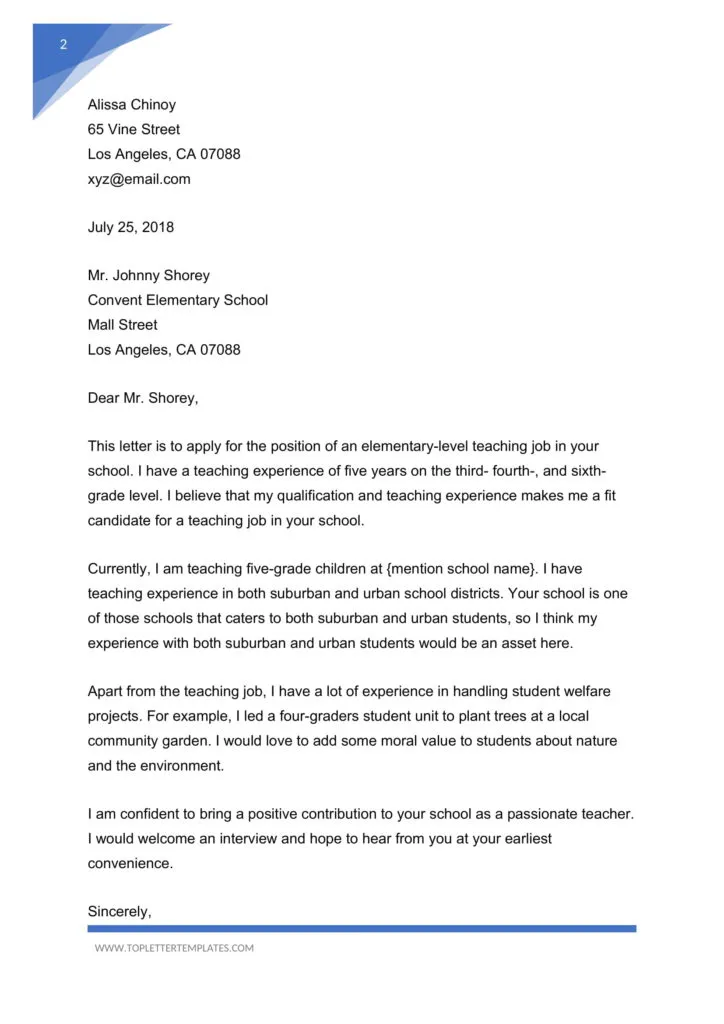
Use quantifiable achievements to showcase your impact in previous roles. Instead of saying you improved student grades, state the percentage increase. Instead of saying you implemented new strategies, describe the successful outcomes. Provide specific examples that demonstrate your positive influence on student learning and school environment. For instance, you could mention improvements in test scores, increased student engagement, or positive feedback from parents or colleagues. Quantifiable achievements make your cover letter more compelling and help the hiring committee understand your capabilities. Ensure the quantifiable achievements mentioned support your overall narrative and align with the school’s goals.
Structuring Your Teaching Cover Letter
Structuring your teaching cover letter thoughtfully ensures your message is clear, concise, and impactful. A well-structured cover letter guides the reader through your qualifications and highlights the key information. A proper structure helps present a professional image and makes it easier for the hiring committee to understand your strengths and consider you for the position. Always ensure a clear flow from the introduction to the conclusion, with a strong emphasis on your skills and experience.
Header and Contact Information
Begin your cover letter with a professional header that includes your contact information (name, address, phone number, and email address). This information should be placed at the top of the page, making it easy for the hiring committee to contact you. Also, include the date and the recipient’s contact information (name, title, school name, and address), if available. Make sure your email address is professional. Ensure all information is accurate and up-to-date to facilitate a smooth communication process.
Greeting and Opening Paragraph
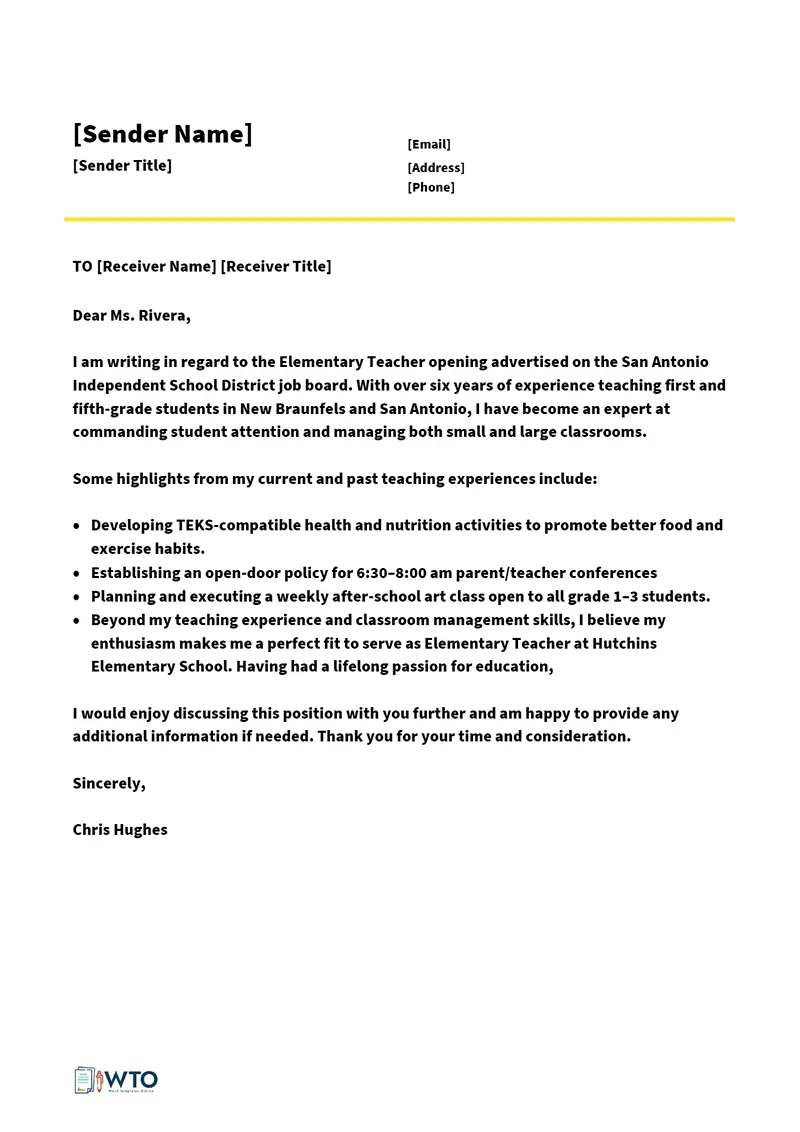
Start with a professional greeting, such as “Dear Mr./Ms. [Last Name]” or “Dear Hiring Committee.” If you don’t know the hiring manager’s name, use a general greeting such as “Dear Hiring Manager.” The opening paragraph should immediately grab the reader’s attention by stating the position you are applying for and where you found the job posting. Briefly mention why you are interested in the position and what makes you a good fit. This is your chance to make a strong first impression and set the tone for the rest of your letter. Avoid generic openings and express your enthusiasm.
Body Paragraphs
The body paragraphs are the core of your cover letter, where you highlight your qualifications, experience, and skills in more detail. Use these paragraphs to elaborate on your achievements and explain how they align with the job requirements. Always match your qualifications and experience with the requirements stated in the job description. Focus on specific examples that demonstrate your skills and what makes you a good fit. Ensure the paragraphs are well-organized and easy to read, and use each paragraph to emphasize a different aspect of your qualifications. Be sure to keep the language professional and the tone enthusiastic.
Closing and Call to Action
The closing paragraph should summarize your interest in the position and reiterate your enthusiasm. Express your gratitude for the reader’s time and consideration. Include a call to action, such as “I am eager to discuss my qualifications further and welcome the opportunity for an interview.” End with a professional closing, such as “Sincerely” or “Best regards,” followed by your name. Make sure to proofread the closing for any errors before submitting the letter. This ensures a positive and lasting impression on the reader.
Formatting and Tone
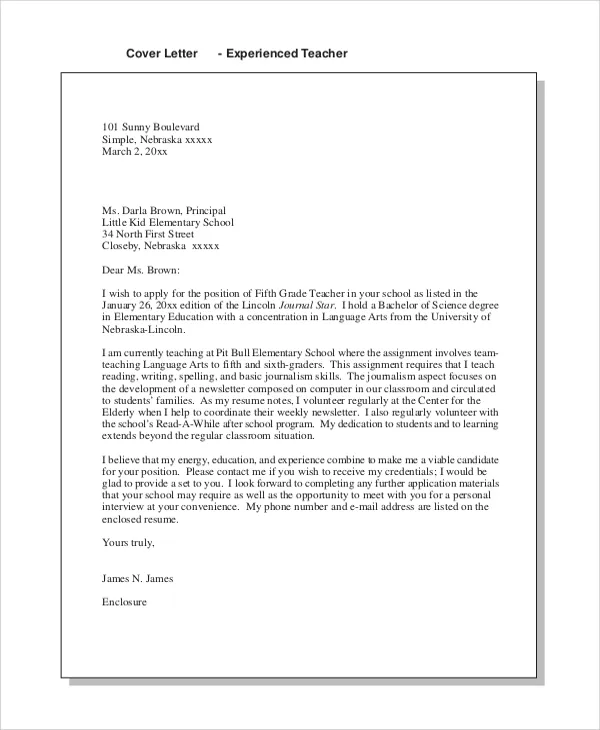
The formatting and tone of your cover letter are critical to making a positive impression. Professional formatting ensures your cover letter is easy to read and visually appealing, while the right tone communicates your professionalism and enthusiasm. Ensure the formatting is consistent throughout the entire document and that the tone is appropriate for the role you are applying for. Remember that the overall appearance and tone of your letter contribute to your candidacy.
Formatting Guidelines
Use a clear and professional font, such as Times New Roman, Arial, or Calibri, and ensure it is easy to read. Keep the font size between 10 and 12 points. Use single-spacing for the body of the letter, with a blank line between paragraphs. Use left alignment and avoid justifying the text. The margins should be 1 inch on all sides. Make sure your cover letter is concise, ideally one page in length. A well-formatted cover letter shows that you pay attention to detail and have strong communication skills. Ensure the document is easy to navigate for the reader.
Maintaining a Professional Tone
Maintain a professional and enthusiastic tone throughout the cover letter. Use formal language and avoid slang or overly casual expressions. Express your passion for teaching and your interest in the position, but be careful not to sound overly familiar. Highlight your achievements and skills, but remain humble. Tailor the tone to match the school’s culture. Always proofread your letter to ensure it is free of grammatical errors and typos, as these mistakes can undermine your professionalism.
Proofreading and Editing
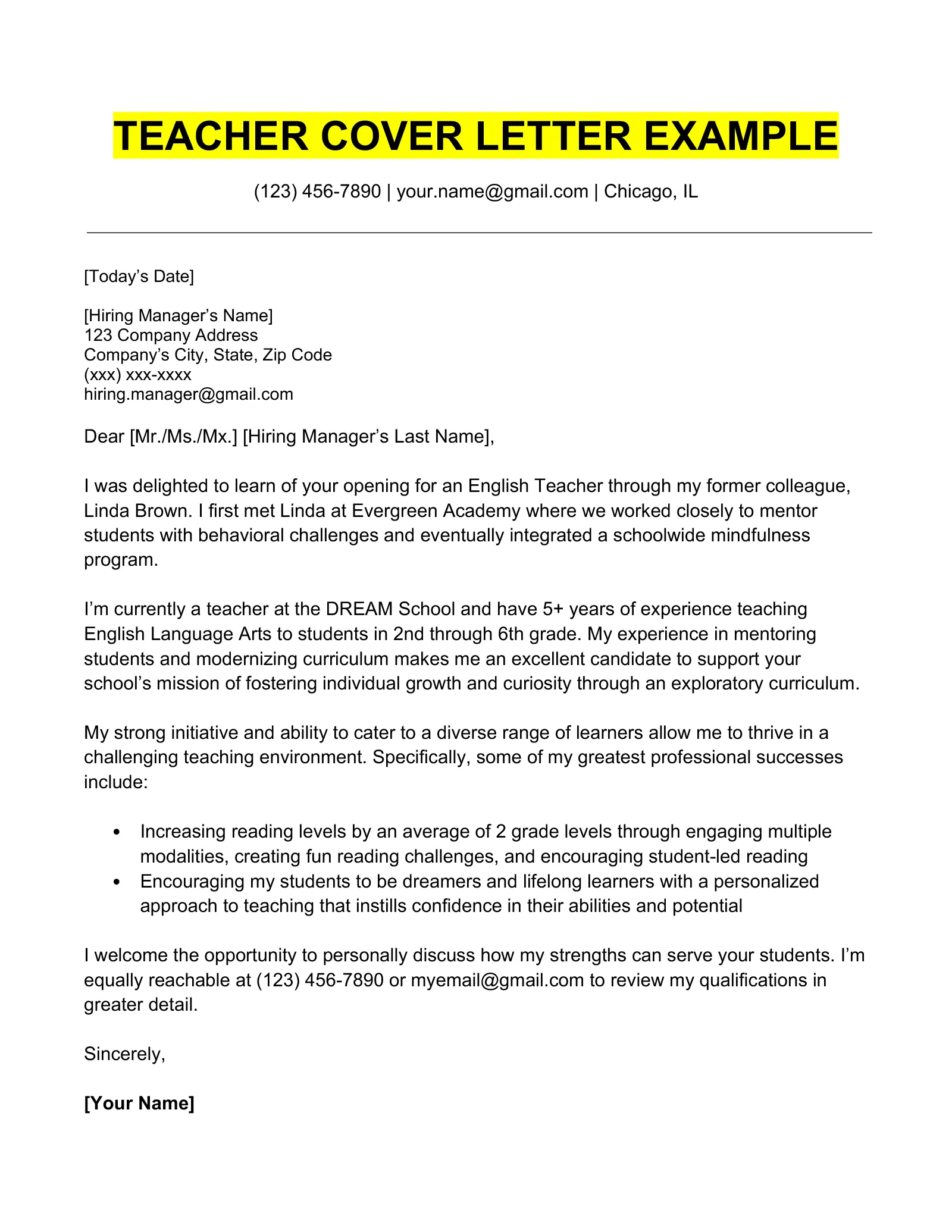
Proofreading and editing your cover letter are crucial steps in the writing process. Before submitting, carefully proofread your cover letter to catch any errors in grammar, spelling, and punctuation. Read it aloud to ensure the sentences flow smoothly and make sense. Ask a friend, family member, or career counselor to review your cover letter for feedback. Pay close attention to the language and tone to ensure they align with your intended message. A well-proofread and edited cover letter showcases your attention to detail and professionalism. Always ensure it is free of any mistakes before sending it out. Use grammar and spelling checkers to help.
Common Mistakes to Avoid
There are several common mistakes that job seekers often make in their cover letters. Avoid generic cover letters that are not tailored to the specific position or school. Do not use vague language, and instead provide specific examples of your accomplishments and skills. Refrain from repeating information directly from your resume; use the cover letter to expand on your qualifications. Avoid negative language or complaining about past employers or situations. Ensure you are not including any typos, grammatical errors, or formatting inconsistencies. Be certain to avoid any unprofessional email addresses or language. Proofreading can help you prevent these common mistakes.
Using Keywords Effectively
Use keywords from the job description throughout your cover letter. Identify key skills, qualifications, and requirements mentioned in the job posting. Incorporate these keywords naturally into your writing to demonstrate your alignment with the position. This helps the hiring committee quickly see that you meet the required criteria. However, avoid keyword stuffing, which can make your letter sound unnatural and less effective. Your cover letter should always focus on providing value to the reader.
Generic vs. Tailored Letters
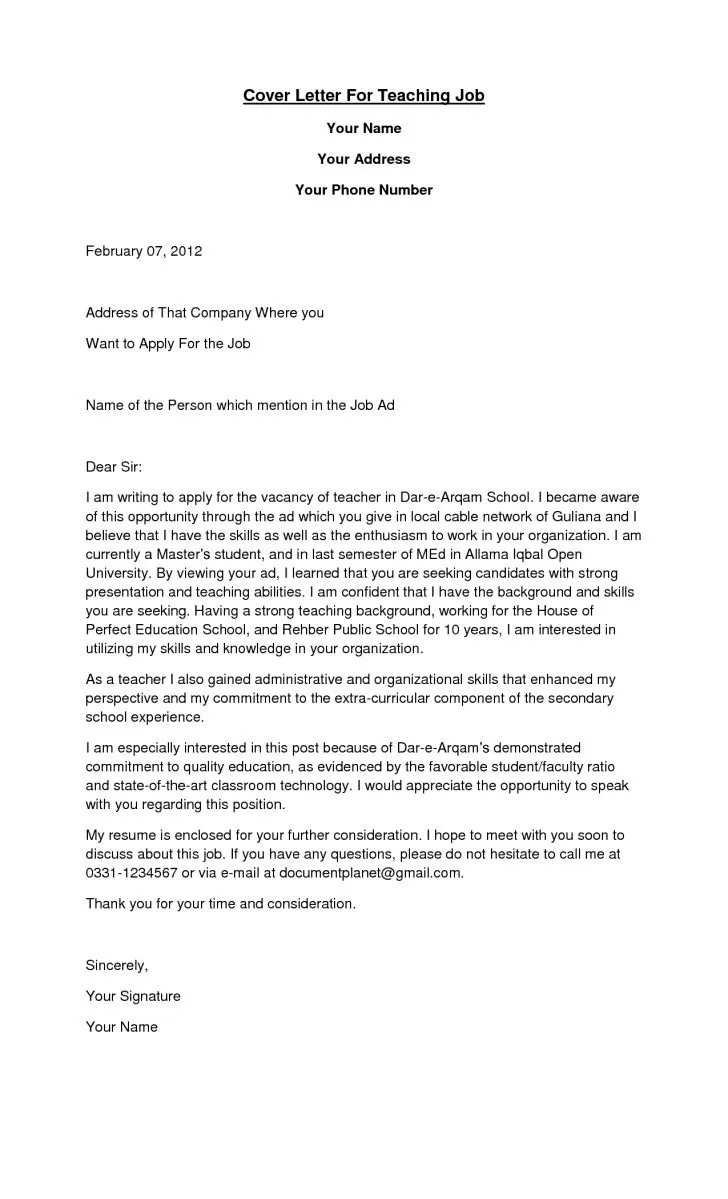
Always tailor your cover letter to each specific teaching position you apply for. Research the school and understand its mission, values, and goals. Customize your letter to address the specific requirements and preferences of the hiring committee. Avoid using a generic cover letter that can be sent to any school. Make sure your letter demonstrates your genuine interest in the position and the school. Take the time to personalize your letter to show the reader that you have a thorough understanding of the position. Tailoring your cover letter is essential for making a strong impression.
Where to Find Cover Letter Examples
There are various sources where you can find cover letter examples to guide your writing. Many career websites offer sample cover letters for different teaching positions. Look for examples that are relevant to your experience and the specific type of teaching job you want. Online resume builders often include cover letter templates and examples. You can also consult with career counselors or mentors for advice and examples. When using examples, make sure to customize them to reflect your own skills, experience, and the specific requirements of the job. Remember that the best cover letter is one that is original and authentically represents you. Using examples is great, but ensuring the content is tailored to your individual background is even better.
